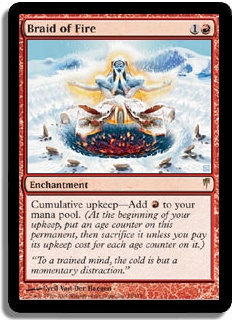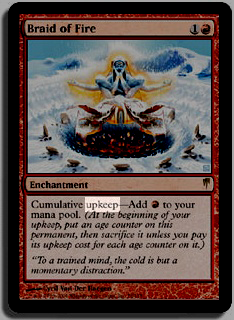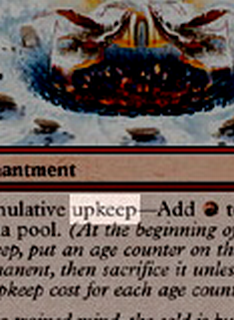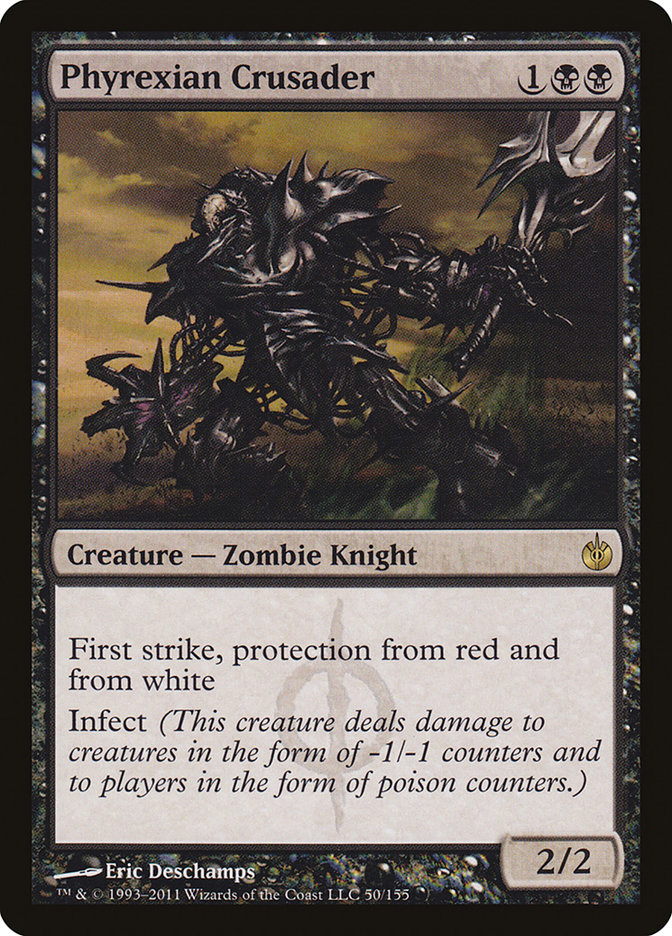And just like that, Grand Prix Richmond is in three days! This will be the largest Modern event I’ve ever attended (and it sounds like it could be the largest Magic event I’ve ever attended), and I can’t wait. Modern is a format that’s fascinated me for a while, and this seems like a fun and exciting way to jump into it.
I’ve built Modern decks before, and each one has been fun to playtest and tweak. Modern is often called "Legacy lite," at least by the folks around here, and I agree with that. Legacy, a high-powered and engrossing format of high-skill plays and complex board states, is great. Never in my life have I played in a Legacy tournament, and all of the decks I’ve built for Legacy are bad or for funsies (usually casual). Modern offers the best of both worlds.
I’ve proxied and tested several Modern decks, and for this coming weekend I’ve considered several decks. We’ll start off with an update to a personal favorite that you might have seen in my column before. It’s probably my longest-standing Constructed deck, and I continually update it to make it more streamlined and aggressive.
Creatures (18)
Lands (21)
Spells (21)
- 4 Lightning Bolt
- 4 Lightning Helix
- 2 Shard Volley
- 3 Path to Exile
- 2 Zektar Shrine Expedition
- 1 Searing Blaze
- 1 Emerge Unscathed
- 4 Boros Charm
Sideboard

This is my version of a Modern aggro deck: lots of burn and removal to gain tempo plus manaless ways to pump my one- and two-drops. This can have an unprepared deck dead on turn 3 and more consistently on turn 4 or 5. I attribute the quality of this deck to the level of interaction between the spells, the land base, and the creatures. However, the deck does suffer from running out of gas, life gain, and sweepers. If I have no creatures and my opponent is at ten or more life, there’s little chance I can rally the rest of their life total. Nevertheless, there are a lot of great spells to push through creatures and damage. I’m also particularly proud of the sideboard.
Loxodon Smiter solves several of this deck’s problems. It’s the only creature in my deck that lives through Lightning Bolt, and it’s a slick discard to Liliana of the Veil, at which point you can swing back and kill her and your opponent is faced with a three-for-on. It can also be resolved through a hail of counterspells. It’s exceptionally efficient, and it gives me consistent forceful presence against the format’s burn and Wild Nacatl.
Smash to Smithereens replaced Wear // Tear, an addition I made in June. I realized that I didn’t want to waste time by destroying an artifact unless I was also killing them, so this tagged in. I couldn’t think of enough enchantments that might be a problem, and artifacts are staples of several archetypes. Skullcrack serves as additional burn (it replaces Path to Exile against decks with few creatures for example), but it also replaces Lightning Helix against Blood Moon decks; only one of my lands can produce white against Blood Moon, so Helix loses a lot of value.
Finally, Angel’s Grace is my anti-combo card. This uncounterable Time Stop (kind of) can stop a Storm deck, a Splinter Twin deck, or a Hive Mind deck (cast on your upkeep and pass the turn for maximum hilarity) or can act as a semi Fog. Sometimes, especially in this deck, you just need one more swing to close up a tight race.
This deck has proven locally to be fast and consistent enough to see tournament play, but there’s no doubt it has some poor matchups (even a good sideboard can only help so much_. This deck is a bit one note, and while I think it’s one of the best in the world at what it does, I still feel like it will have some glaring deficiencies come Saturday. Therefore, it’s just a fallback plan.
So what deck do I really want to play?
At my local shop and in my spare time, I’ve talked with local Modern pros and researched popular Modern decks to see what the best decks in the format are. I’ve always been a proponent of playing the deck that beats the best deck, not just the best deck, for better or for worse. Blood Moon is very oppressive to many decks, and as a fan of red, I started there. I don’t mind prison decks if they’re interactive enough for me to feel like I’m playing a real game. I first marched down the ritual path, hoping to resolve Blood Moon a turn early and lock a would-be multicolored deck out of the game right away. Although the deck underwent several drafts, eventually losing the rituals in favor of the more consistent and powerful Braid of Fire, here’s my final draft.
Creatures (7)
Planeswalkers (8)
- 2 Chandra Ablaze
- 3 Koth of the Hammer
- 1 Karn Liberated
- 1 Tibalt, the Fiend-Blooded
- 1 Chandra, Pyromaster
Lands (22)
- 22 Mountain
Spells (23)

Now that I’ve explained the initial decision-making process, let’s look at the deck in more detail.
Simian Spirit Guide is essential to resolving spells one turn early, whether it’s a Braid of Fire on turn 1, a Blood Moon on turn 2, or a Koth of the Hammer on turn 3. Later in the game, after Braid of Fire provides you all the mana you’ll ever need, this is a Gray Ogre or a perfectly fine discard to Chandra Ablaze’s +1 ability. Though obviously best in the opener, Simian Spirit Guide can still do work in the late game too.
Spellskite, originally a three-of in the sideboard, proved to be useful time and time again. It can redirect a Lightning Bolt to itself, making every Bolt a Shock. Its redirect ability can also save a planeswalker from an untimely Lightning Bolt, as they target you first. Furthermore, it can redirect hate designed to destroy either Braid of Fire or Blood Moon. Most spells or abilities that might target it (Qasali Pridemage, Nature’s Claim, Maelstrom Pulse, Detention Sphere) also find Spellskite a legal target, so you can drag the spell or ability away from your prime targets for the hugely discounted cost of two life.
Furthermore, it’s a great blocker, stuffing a Wild Nacatl, Goblin Guide, or even a small Tarmogoyf. It also survives Anger of the Gods. Four toughness is a huge boon in this format, if you didn’t guess already.

Braid of Fire was so good and I needed it so bad that I invested in a whole playset, still baffled it was Modern legal. On turn 1 it acts like an Arbor Elf, providing you three mana on turn 2 (assuming another Mountain or Simian Spirit Guide). This card can singlehandedly make a land-light hand keepable—

Hmm?

Oh no.

Needless to say, after I purchased all the pieces, tested several matches, and frankly wrote this entire article, one of the pals I might be riding to Richmond with pointed this out to me during a friendly game. What a drag. I should have noticed it right off the bat, but Braid of Fire only grants you this extra mana during your upkeep.
The deck had to come to so heavily rely on Braid of Fire that the concept seemed unsalvageable. Short of including a set of Vedalken Orrery or somehow splashing green for Upwelling, I could not see a way for this deck to work in its current iteration. All of my win conditions, land destruction and mana advantage came from Braid of Fire, so I had to either return to rituals (which did not work well) or abandon the strategy.
I decided to desleeve and try a third option. All I needed was a third option.
With time short and resources low, I had to rely on cards I already owned. My Modern stable was pretty meager except for the leftovers from "Braidgate," which I supposed could act as trade bait. I did have a set of signed Liliana of the Veil, and I loved playing her in last year’s Standard.
Liliana of the Veil has drawn me to the concept of Mono-Black Control in either Modern or Legacy. She is a one-stop shop for everything mono-black represents, and she makes a great threat at the top of the curve in either Eternal format. She’d featured prominently in several skeleton drafts I’d made in the past, but now that she was being hoisted into the big leagues, how could I use her realistically?
The control engine seemed fine, and I already had a set of Thoughtseize too. There were the big expensive pieces, so what could fill the other 67 slots? How would I win?
While I considered a couple different routes, there was one particular black card whose design has always intrigued me.
I’m not sure what it is, but a black creature with these protections and these qualities just sounds really, well, cool. I know you’ve probably played a card in your deck at one point in your Magic career that you played for just that reason. This clean, fair, French vanilla design clearly defines the personality and quality of this creature. I’ve always enjoyed designs like this—Great Sable Stag, Giant Solifuge, and Phyrexian Crusader all meet these subtle unique criteria, and I love playing each one.
Phyrexian Crusader also has the important ability to dodge a large amount of Modern’s current removal suite. Lightning Bolt, Lightning Helix, Path to Exile, and any red sweeper can’t touch it. It can sneak past or infinitely protect against any creature of that color too. That has to be worth something. If we move to Mono-Black Infect with discard and creature removal as our primary ways of control, how does the rest of the list look, and how is the strategy unique from the more common Mono-Green Infect?
Creatures (12)
Planeswalkers (4)
Lands (24)
Spells (20)
Sideboard

From here I’ve been forced to take a new stand. The numbers are generalized, and my time is short. But with some wiggling and testing, I think this deck may make a functional appearance on Saturday.
Mono-Black Infect is much different than Mono-Green Infect. While green intends to react against potential removal by offering protection via Apostle’s Blessing or Mutagenic Growth, black proactively and permanently deals with potential problems via discard and targeted removal.
Mono-Green Infect, at least in its current form, spams single-target pumps, hoping to curb stomp the opponent in a single turn, two tops. While this can often be utterly unstoppable in the right context, a poor draw or a drawn-out game can spell trouble for green infect. Mono-Black Infect, on the other hand, is meant for the long game. In this scenario, my goal is to deprive the opponent of spells and threats. Then, when the time is right, I resolve a good infect creature and attach Lashwrithe (hopefully for free). With a sufficiently large Swamp count, a turn or two can take them out. Nice and neat.
This is potentially the wrong approach to an infect deck. After all, infect creatures are underpowered in combat and still die to global removal. Removing threats or their win conditions seems like the right path to victory, and infect is still quicker than some other options. Resolving a turn 3 Phyrexian Crusader followed by a turn 4 Lashwrithe can mean potentially six infect to the face.
With some number tweaking and likely to be a few replacements, I’ll be ready to go in three days. It’ll only take a series of flurried testing, frantic trading, and no small amount of pleading to borrow cards. Although the Mono-Black Infect deck you see here will surely get tweaked before game day, it will provide the framework for where I’ll most likely land. I’ve been offered a couple decks to borrow, but I’ve turned them down; I’m not driving eight hours to play someone else’s deck.
Tournaments offer lessons of their own: know when to mulligan, don’t get tilted, and don’t try to sustain yourself on Cheetos and Red Bull. Today, albeit inadvertently, I want to bring you three new lessons that may be helpful for you as you prepare for Grand Prix Richmond or any other large tournament, especially Eternal ones.
1. Check your rulings.
I know, "haha, we should all get this one by now." I didn’t; I knew that’s how Braid of Fire worked, but I got so caught up in the concept of my deck that it completely slipped my mind. Once my planning had proceeded, I passed over this step, and it led to a surplus of red planeswalkers and shame. This applies especially if you’re brewing. If you’re doing something new in a format, wonderful! Make sure that the interactions you expect are not only supported by the way the rules work on the card but also the way the rules work in the game, whether it’s the stack, phases, combat, or state-based effects. This seems like a no-brainer, but if you build an awesome airplane but forget to do the math, you’re gonna be in for a really short flight.
2. Be resourceful.
Whenever you travel to a high-dollar tournament, it’s easy to make assumptions. Whether you know your deck beforehand or build it on the go, prepare alternatives. If you need four copies of Go for the Throat but the local game shop hasn’t had them in three weeks, you might want to know the next best thing, be that Ultimate Price, Doom Blade, or Dismember. Know what your deck needs to win and know what keeps your deck from winning. If you need to scrap your idea entirely, know what you have and what you can build with it. In my case, I chose a deck where I already had the most expensive pieces of it (a set of both Liliana of the Veil and Thoughtseize, totaling around $300) and the other parts are easily traded for. Constructing with a limited plate is exciting and engaging.
3. Don’t give up.
This one seems admittedly nebulous, but even if you have your heart set on a deck, it still may not work out in the end. I was crushed when I found out that my careful planning and staggered purchasing were foiled by the deckbuilding equivalent of a typo. I moped briefly, and then I got to brewing that night. Be familiar with what others are playing and know that every successful deck had to have a first good tournament. Build a deck with passion, style, strength, and flexibility and enjoy the day, win or lose. Losses are learning opportunities, whether they’re after a match or before you even arrive at the tournament site.
I can’t wait to see you guys in Virginia on Saturday, and I wish you the best of luck. Any tips on the Mono-Black Infect deck are appreciated, and I’d love to see what you’re brewing too!



